Light Writing in the Tropics: The Story of Hercule Florence
In the 1830s, an adventurer and inventor named Hercule Florence sought to score the Amazon’s abundant birdsong. When attempting to print his peculiar manuscript about nature’s sound archive, he also invented an early form of photography.
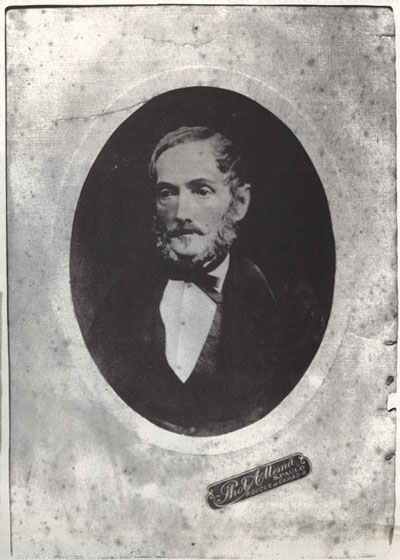
Portrait of Hercule Florence, ca. 1875. Courtesy Instituto Hercule Florence (Arnaldo Machado Florence Archive), São Paulo
In a letter dated June 1839, William Henry Fox Talbot wrote to a botanist living in Italy that his “photogenic” drawings, as he named his first proto-photographs made with the aid of a solar microscope, would be “a big help to botanists.” In a later letter Talbot insisted that his invention would be “useful especially to the naturalists, since one can copy the most difficult things with much ease, for example crystallizations, tiny parts of plants, etc. etc.” Little did Talbot, largely credited as one of photography’s inventors, know that six years earlier a twenty-nine-year-old man in Brazil, far removed from the conversations happening in Europe about how to fix light and shadow (including French scientist and politician François Arago’s presentation of the daguerreotype at the Academy of Sciences in Paris in 1839, and British scientist Sir John Herschel’s supposed coining of the word photography the same year with his now-famous phrase “picture obtained by photography” at the Royal Society in London), had invented his own form of “photogenic” writing aimed to aid naturalists.
In 1833, Hercule Florence, a Frenchman who settled on the outskirts of São Paulo after surviving a four-year stint as a draftsman for a Russian Naturalist expedition up the Amazon River basin in the 1820s, invented a mode of reproduction that he called photographie (light writing)—the same words Fox Talbot used years later to describe his invention. Florence arrived at his form of light writing somewhat accidentally. In contrast to the narrative typically used to describe photography’s invention in Europe, it was not the joint achievement of nineteenth- century chemists and artists experimenting with light and silver compounds, nor that of Romantic poets desiring to apprehend that unruly living organism called nature. Instead it was the end result of a long search for a mode of printing. Specifically, Florence wanted to print and distribute a transcription method he had developed to organize and systematize the sounds of nature found in the Amazon region.
Florence was twenty when he arrived in the newly proclaimed Brazilian Empire in the early 1820s, living first in Rio de Janeiro, where he worked at a bookstore and printing press, before settling down some years later in the small village of São Carlos (Campinas), outside of São Paulo, for the remainder of his life. He hadn’t been living in his adopted country for long before he responded to an advertisement for an expedition led by Georg Heinrich von Langsdorff and was hired to be the group’s second draftsman (along with the well-known German painter Johann Moritz Rugendas and a younger artist named Aimé Adrien Taunay, although Rugendas would be dismissed before the journey began, after falling out with Langsdorff ). The expedition’s aim was to reach Pará, in the Amazon basin, through a fluvial route, while engaging in botanical, astronomical, and cartographic observations typical of such ventures. Close reading of Florence’s sporadic diary entries from these years reveals that despite his penchant for travel and adventure—a trait that brought him to Brazil—he found the expedition tiresome, describing the journey as a “grueling, anguished, and unfortunate peregrination” and noting time and again that “to see one Brazilian village is to see almost all of them.” These observations are not surprising for a man who often commented on the lack of culture and excess of nature in his adopted homeland. The watercolor views and landscapes that Florence produced as a hired painter bored him. What was the purpose, he asked in his diary, of visually reproducing the natural world, of composing collections that could only imitate existing collections and inventories gathered and archived throughout Europe? Was there nothing uncharted and original left to continue expanding the inventory of the world? Had nature been turned, in this way, into nothing more than a dead still life—obvious and trivial, predictable, lifeless?
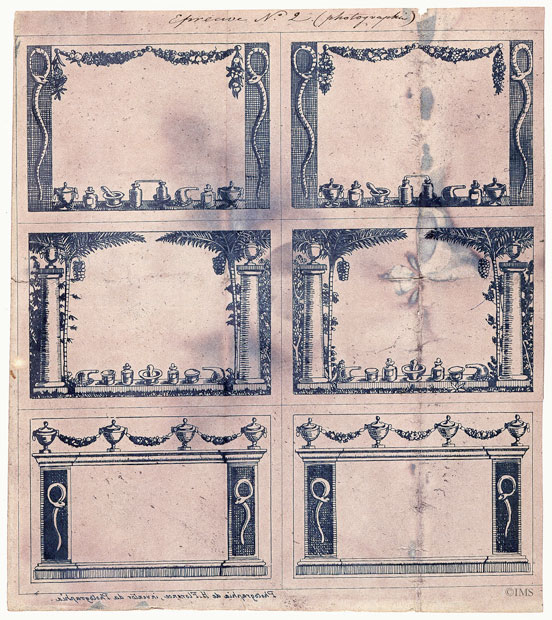
Hercule Florence, Photographic copy of pharmacy labels obtained through direct contact with photosensitive paper under the action of sunlight, ca. 1833. The lower left margin reads (in reverse): “Photography by H. Florence, inventor of photography.” © Instituto Moreira Salles
Craving a recording of the natural world that offered infinite uniqueness, singularity, and power, Florence fixated on the idea that while the naturalist expeditions of the first decades of the nineteenth century had created encyclopedic and cartographic knowledge, they never contemplated the possibility of a sonic inventory. “With great zeal we have tried to, and continue to try to, learn everything that is known about animals,” Florence wrote. “Even the most minimal details have not been ignored; for this reason expensive and arduous voyages have been made to almost every point on the globe; collections of animals were thus made at an enormous cost to the museums of the great cities; the descriptions and drawings allow them to become known throughout the world.” Ironically, Florence would have more opportunities to indulge his theories about sound as the expedition ran into grave problems, derailing hopes of becoming the most scientifically important journey of its kind in the region: Taunay would drown crossing a river; the group’s astronomer came down with beriberi, a tropical disease that afflicted many slaves in colonial Brazil; Langsdorff, as well as half of the team, was stricken with malaria and suffered high, debilitating fevers, resulting in his complete insanity and loss of memory. Amid this chaos, Florence sidelined his official work and turned his attentions to the universe of sounds enveloping him. He began a series of notations recording the calls of birds, the croaks of frogs, and noises made by other animals. Of a bird called araponga, Florence writes that “it is beautiful…it makes a sound that imitates well the banging of a hammer on an anvil,” and of the singing of the anhu-póca: “it is big, its voice strong and euphonious; repeats this sound every fourth of a minute.” Florence approximated the corresponding notations to the sounds he heard and then produced musical scores, a method he dubbed zoophonie. The outsized ambition of his desire to catalogue all the jungle’s birdsong was not lost on Florence: “when one considers how much animals’ voices vary to infinity, one tends to think that it is almost impossible to transcribe them without using an infinite number of signs … the method that I am here giving is only a first attempt … .”
In 1831, after returning home from his journeys, Florence attempted to print and circulate his notes and manuscript outlining his zoophonie. The cumbersomely titled text, Research on the Voice of Animals or Essay on a New Subject of Study Offered to the Friends of Nature, detailed his discovery of nature’s potential sound archive and proposed his novel method of capturing and recording the immaterial, enchanted animal sounds of the Brazilian tropical forests. Florence, however, ran into difficulties finding a printer for his manuscript—a struggle that reveals how his experimentation with photography belongs to the story of a fragile, emerging early-nineteenth-century print culture. Few printing presses then existed in Brazil because the Portuguese Crown sought to control the spread of anti-colonial propaganda. But Florence would not be deterred. This obstacle motivated him to find a more accessible and democratic mode of reproduction, one that utilized a resource available to all, sunlight. Unlike the European figures credited with the invention of the medium, Florence used photography to reproduce symbols and written artifacts, not the visible world. His first attempts with the process resulted in a print made around 1833 of pharmacy labels, likely produced for his friend and collaborator Joaquim Corrêa de Mello, a chemist who at the time lived in Campinas, the same village as Florence, and helped him learn the properties of silver nitrate. These six pharmacy labels on a single sheet of paper demonstrate how, for Florence, photography functioned as a mode of reproduction analogous to printing. His method worked much like a modern-day photocopy—and, significantly, these labels reveal how seriality was ingrained in his work, something that standard accounts of photography’s history attribute to the invention of the carte-de-visite decades later. His notebooks and diaries also reveal that he worked on other photographs: a photographic copy of a Masonic Diploma and one of his own hand-drawn designs for a camera obscura and other items needed for the photographic process. Ultimately, Florence did not use this method to print his manuscript, as he finally convinced a printing press in Rio de Janeiro to publish his findings, though there is no record of how his zoophonie was received.
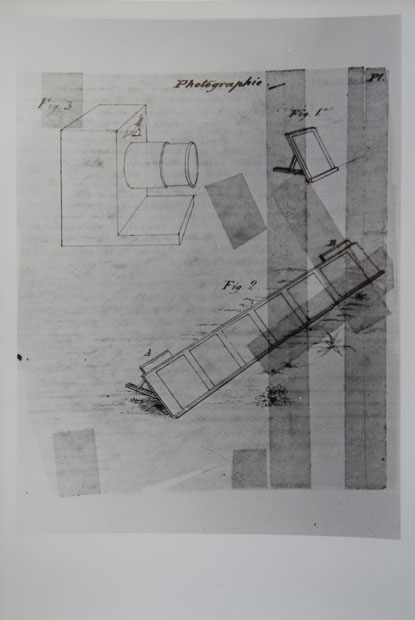
“Equipment used for photography,” originally appeared in Florence’s manuscript, L’Ami des Arts…, 1837. Courtesy Instituto Hercule Florence (Arnaldo Machado Florence Archive)
On May 1, 1839, the Rio de Janeiro–based newspaper Jornal do Commercio announced the invention of what would become known as the daguerreotype, calling the invention a “revolution in the arts of design,” in which “nature appears portraying itself, copying its works as well as works of art…. Light, light itself was the painter.” Six months later, in response to the announcement of Louis Daguerre’s method, Florence published a press release in the São Paulo–based newspaper A Phenix in which he stated that he had already been working on photographic printing methods for nine years and that these experiments led him first to the invention of polygraphy (a form of printing that used sunlight, stencils, and chemistry to reproduce texts or graphics) and then to the “discovery” of “fixing of images in the camera obscura through the action of light.” He continued, “I will not dispute anyone’s discoveries, because one same idea can come to two persons, and because I always considered my findings precarious.” When Florence’s press release was reprinted in Rio two months later, it was prefaced by a journalist’s note stating, “Let the readers compare the dates and decide if the world owes the discovery of Photography, or at the very least of Polygraphy, to Europe or to Brazil.”
Daguerre had received a life pension from the French government, and Florence hoped to obtain the same. He wrote letters and made his case to the French Academy of Sciences but never received any serious response, and his diary entries from this time convey his resentment at being overlooked. “Photography is the wonder of the century. I had also already established the grounds, foreseen this art in all its majesty. I did it [photography] before Daguerre’s process, but I worked in exile. I printed by means of sunlight seven years before photography was first talked about. I had already given it that name; however, all honors to Daguerre.” The French invention caught on and became popular in Brazil; in 1840, fourteen-year-old Pedro II, about to be crowned Second Emperor of Brazil, had the daguerreotype technique demonstrated to him. The young emperor became enamored with the invention, turning into the first promoter of official photography within a monarchy, introducing the title of “Crown Photographer” before Queen Victoria in England.
A tireless inventor despite lack of fame, fortune, or even credit, Florence continued to experiment with reproduction. In the late 1830s, he purchased a typography machine, obtained the necessary license to operate it, and printed advertisements and the short-lived revolutionary newspaper O Paulista that became the “fuel of the liberal movement” until the anti- monarchical revolt had been squashed, forcing Florence to disappear his machine after printing only four editions. In the early 1840s, about a decade after his first experiments with photography, Florence invented unique and inimitable paper money. The move from photography to money might seem a stretch, but both share an inherent seriality. A banking crisis of 1864 that resulted in a reconfiguration of the banking and commerce system made it evident that money, both paper and coin, were difficult to authenticate. Florence seized on the economic tumult by introducing paper that, because of the “sharpness” it allowed in printing, the “microscopic traces,” and the “indelible” quality of the printed colors and patterns could, as his 1842 advertisement claimed, “guarantee … against forgeries.” But this, too, failed to catch on. Yet Florence never gave up: In 1859 he patented a reproduction technique he called “stereopainting” and, soon thereafter “solar painting,” though we don’t know much about what these intriguing projects entailed. His last known “invention” was what he called “The Sixth Order of Architecture, or Brazilian Order.” This order consisted of columns, pediments, and other architectural details inspired by Brazilian palm trees, already an icon of the country. Greece produced the three known orders of architectural style—the Doric, Ionic, and Corinthian—that symbolized the roots of Western architecture. Florence seems to have wanted to put Brazil on the cultural map by inventing a style or order that reflected the country’s tropical environs.
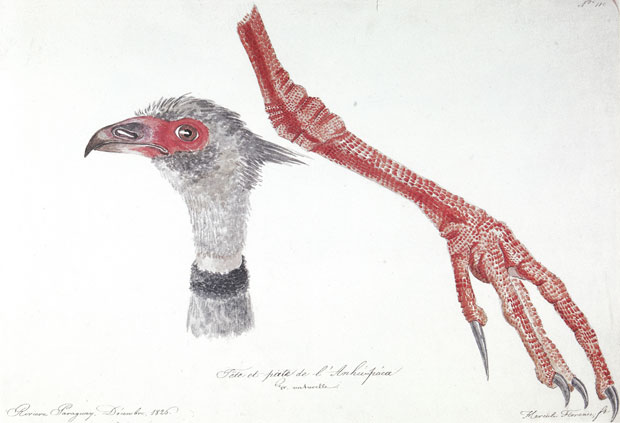
Hercule Florence, Tête et pate de l’anhu-póca (Head and feet of anhu-póca bird, or Southern screamer), Paraguay river, 1826, from Expedição Langsdorff ao Brasil 1821–1829. Volume 3: Aquarelas e desenhos de Florence (Langsdorff expedition to Brazil 1821–1829. Volume 3: Watercolors and drawings). Courtesy Instituto Hercule Florence, Saõ Paulo, and Archive of the Russian Academy of Sciences, St. Petersburg
Why didn’t any of Florence’s ideas and inventions flourish? Most likely his status as an outsider within the highly structured political and class system in nineteenth-century Brazil, with its strong monarchy and organized cultural centers clustered in Rio de Janeiro and the northern city of Recife, is to blame for his lack of recognition. Though his name would fall into obscurity rather than becoming canonized in photography histories, he seems to have passed his later years rather contentedly in the small town of Campinas, where he fathered twenty children and lived on a beautiful fazenda (ranch).
A century passed before Florence’s remarkable achievements were discovered. In the early 1970s, Boris Kossoy, a Brazilian photographer and photography historian who came across Florence’s “alleged” invention through mentions in specialized Brazilian publications, began his research on what he called the “isolated discovery of photography in Brazil.” To build his case Kossoy traveled to the George Eastman House in Rochester, New York, to test, with the aid of technicians, the notations made by Florence about his photographic experiments. His tests proved that Florence had indeed invented a photographic process in 1833. Around the same time his photographic discoveries were being at last acknowledged, his studies of Amazon sounds were also finding new supporters in the emerging field of bioacoustics, or animal communications. In 1978, the world-famous French ornithologist Jacques Vielliard was invited by the University of Campinas, on the outskirts of the city of São Paulo, in Florence’s hometown, to establish what would become the most important bioacoustics lab in the Americas. Vielliard amassed an enormous collection of tropical sounds, creating the “Neotropical Sound Archive,” and in 2005 set up a second archive called the “Amazonian Sound Archive,” housed at the Federal University of Pará.
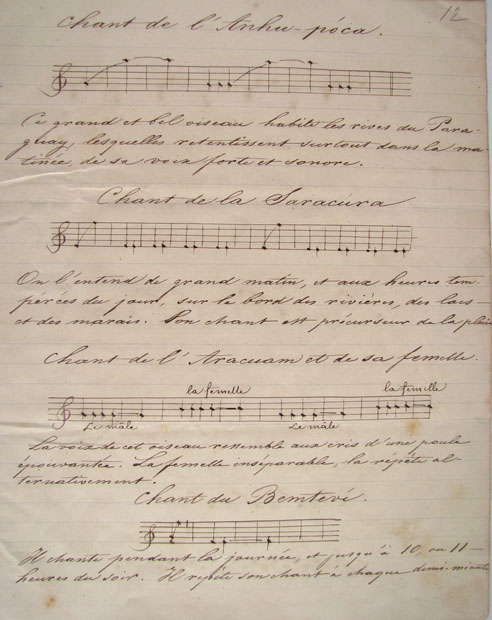
Page from Hercule Florence’s manuscript Voyage fluvial du Tieté a l’Amazone (Fluvial voyage from the Tieté to the Amazon river), 1831, which included many examples of his zoophonie notations. Courtesy Archive of the Instituto Histórico e Geográfico Brasileiro, Rio de Janeiro, and Instituto Hercule Florence, São Paulo
More recently, contemporary artists have found Florence a source of inspiration. In the nineties, German sound artist Michael Fahres, working with a group of artists from Russia, Germany, and Brazil, retraced Florence’s journey with the Langsdorff expedition and reinterpreted his zoophonie. Italian photographer Linda Nagler is preparing a multimedia art exhibition around Florence’s many artistic and scientific explorations for the New National Museum of Monaco in 2015. An Argentine trio including writer Pola Oloixarac, photographer Luna Paiva, and composer Esteban Insinger wrote a contemporary opera called “Hercule Florence in Mato Grosso,” which will premiere in Buenos Aires this October. Perhaps Florence was neither a naturalist nor an inventor but rather a conceptual artist who was ahead of his time.
______
Natalia Brizuela is a professor at the University of California, Berkeley. She is the author of Fotografia e império: Paisagens de um Brasil moderno (Photography and Empire: Landscapes of a modern Brazil) (Companhia das Letras, 2012) and the forthcoming Uma literatura fora de si. Escrita e fotografia (A literature beside itself: Writing and photography) (Rocco, 2014).























